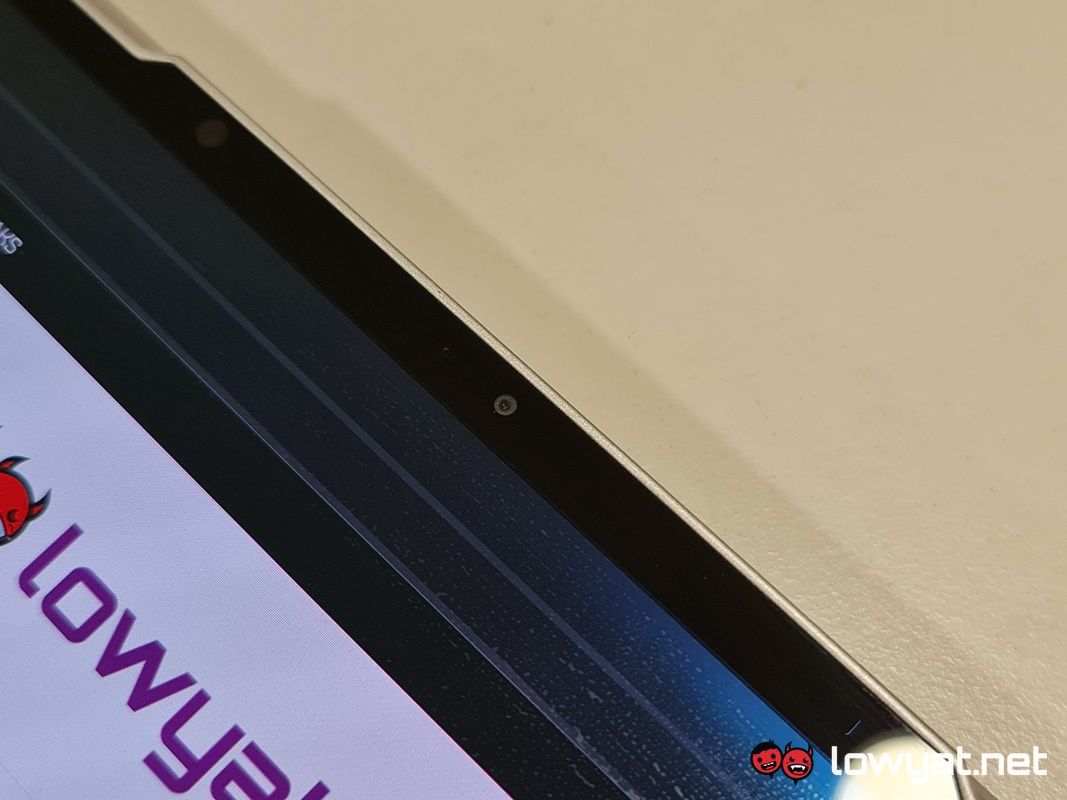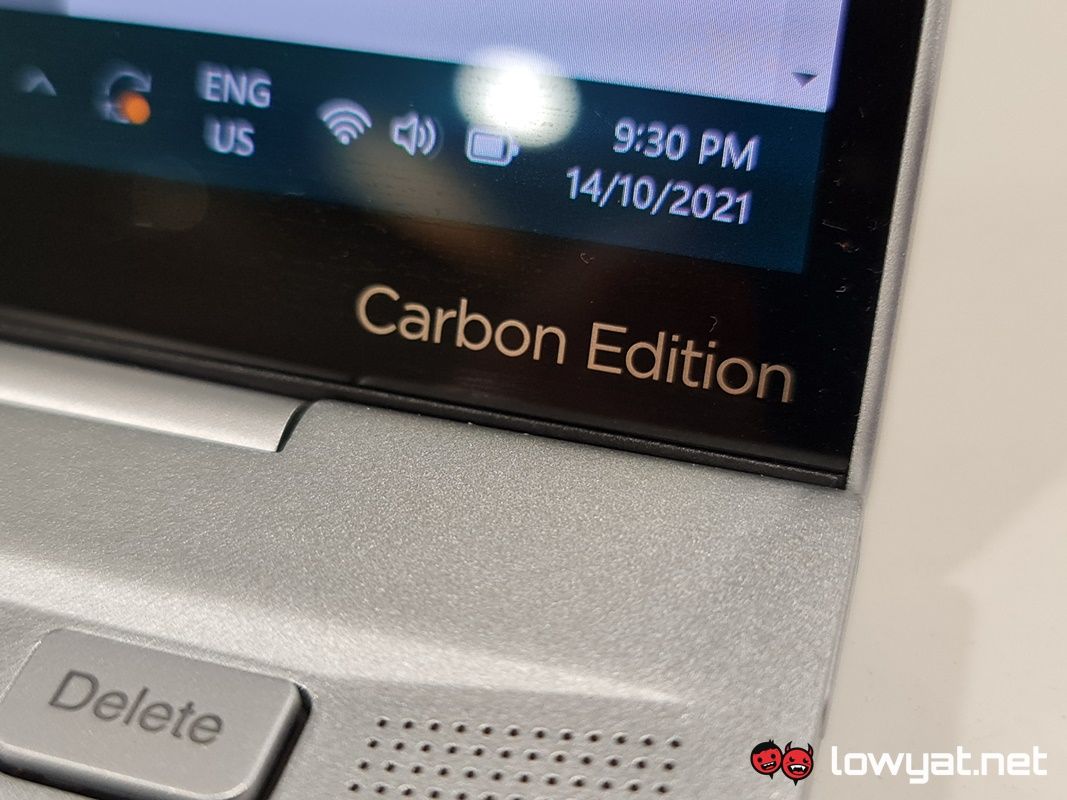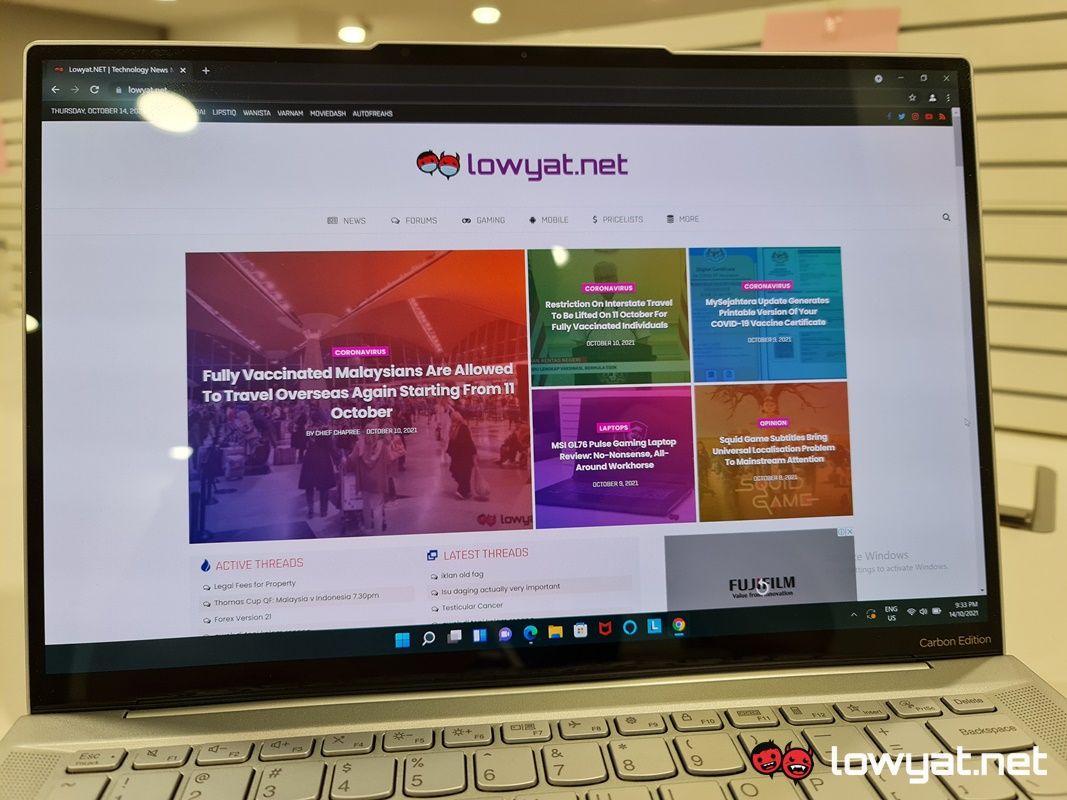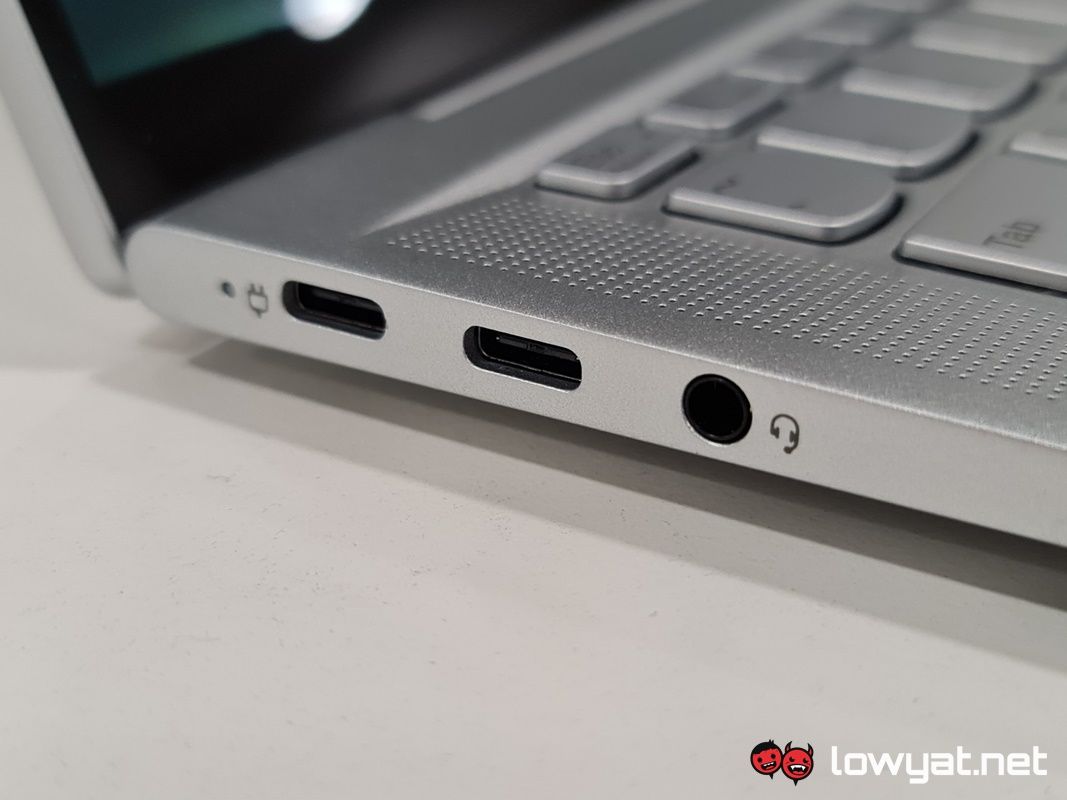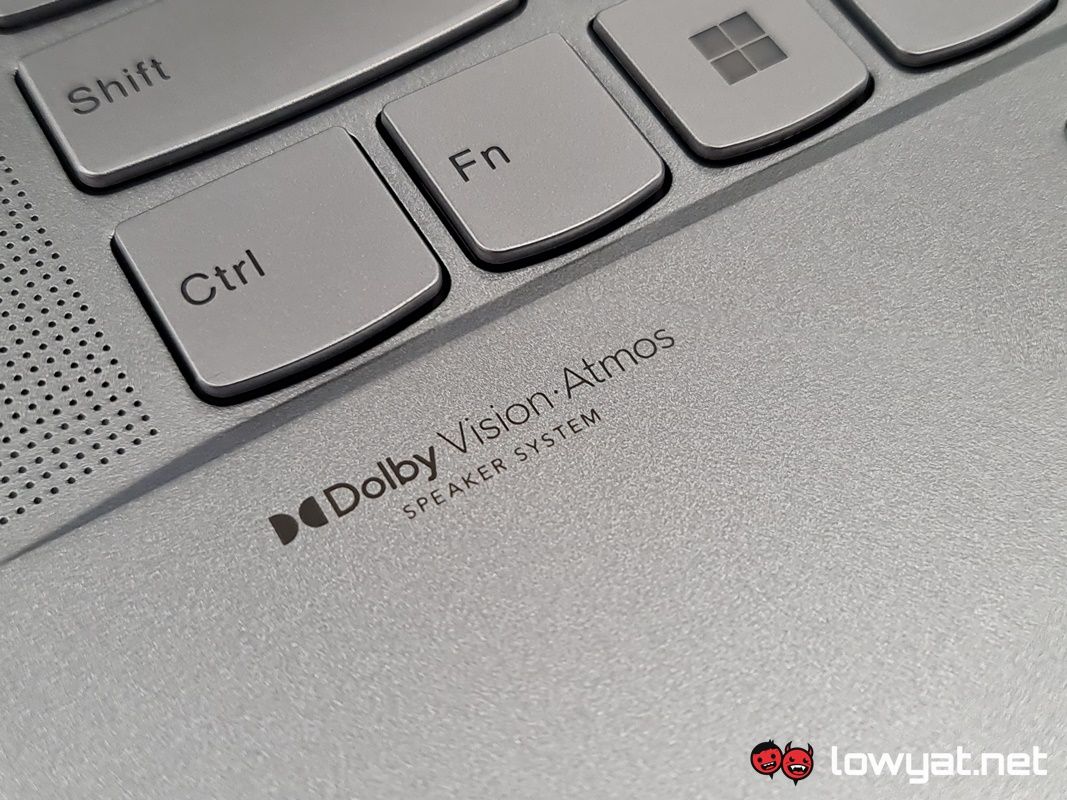Before we begin, I should point out that the unit seen here is an engineering unit, so it should be assumed that the final product may ship out with slightly different features. With that in mind, let’s continue.
Like all Yoga laptops, the Slim 7 Carbon doesn’t stray from in terms of aesthetics; it adheres to the same thin-and-light mantra that has long been the philosophy of the laptop series. Of course, some sacrifices have been made in order for the laptop to maintain its svelte figure: the base can no longer house full-sized USB-A ports, but on the plus side, Lenovo has installed 3 USB-C ports, with one dedicated to charging and from the looks of it, the other two can be expanded to house either more USB-A ports and access to a one HDMI output. Still on the chassis, the Slim 7 Carbon doesn’t feel cumbersome and when folded, swinging it around in one hand is an effortless task. As for the internals of this Slim 7 Carbon, this unit in particular houses an AMD Ryzen 7 5800U CPU and 16GB DDR4 RAM. In addition, the laptop is also fitted with Dolby Vision Atmos speakers that, from my brief experience, are boisterous and most definitely loud enough that I don’t need to actually connect an external speaker to it.
On another note, the display on the Slim 7 Carbon isn’t a Full HD or 1440p panel. Instead, it’s an OLED panel that has a resolution of 2880 x 1800 pixels, making it one of the more densely pixel-packed, 14-inch displays I’ve had the pleasure of viewing. Words look sharp, images retain details, and everything generally looks crisp enough. Oh, and it is also a touch-enabled panel too. For that matter, the panel’s chassis actually feels rigid enough that it actually stands its ground when I attempt to make it bend and flex. Then there’s the battery life of the Slim 7 Carbon. Again, while I didn’t have a lot of time to mess with it but by the time I returned it to Lenovo – I should mention that I did fully charge it before proceeding to use it – the laptop still had a good 60% of power left in it. That said, Lenovo had informed us that on average, this version of the Slim 7 Carbon is capable of squeezing out an average of 15 hours of continuous media playback, provided it was not connected to the internet.
Beyond that, the Slim 7 Carbon also had a webcam that also served as the module for Windows Hello’s facial recognition, which is par for the course on laptops like these. Interestingly enough, the laptop also gave me my first experience with Microsoft’s Windows 11 Pro OS, and I have to say that the UI of the new operating system looks and feels refreshing. Interactions with it are prompt and swift, accessing apps are instantaneous, but again, there wasn’t enough time for me to go in-depth with the OS.
At the time of writing, there is still no local availability or pricing for the Lenovo Yoga Slim7 Carbon, despite the brand having stated that the laptop will be available starting this month. In any case, do check this space in the future, as we’ll likely have a full and in-depth review of the product up, once we’ve received a consumer-ready unit.
